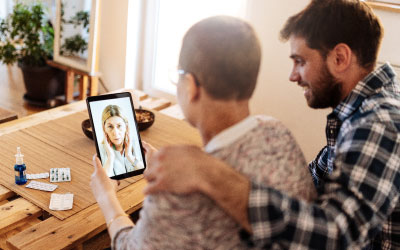Diversity in Clinical Trials
Clinical trial research is vital for the development of new and better treatments to fight cancer. However, estimates show that less than 5% of adult cancer patients participate in cancer clinical trials.
Notably, women and many racial and ethnic groups remain underrepresented in clinical trials despite efforts to increase participation. This significant lack of diversity raises the question about barriers that might decrease willingness to participate in clinical trials.
Diversity in research
Diversity means the practice of including or involving people representing various aspects of the human population, including people of different:
- Ages
- Educational levels
- Genders
- Races/ethnicities
- Religions
- Sexual orientations
- Socioeconomic backgrounds
Equity in research
Equity in health care means that every person has a fair, unbiased opportunity to achieve the highest level of health. Everyone should be able to participate in a clinical trial if they’re eligible (meet the participation criteria) and want to join.
Organizations conducting clinical trials should make efforts to overcome any existing barriers to participation to improve access. Establishing outreach programs and increasing accessibility for underserved communities may help decrease disparities and improve health care fairness.
Inclusion in research
Inclusion means ensuring equal access to opportunities such as clinical trial participation to groups of people who otherwise may be excluded.
Why is clinical trial diversity important?
Diversity in clinical trials allows the research findings to apply to all types of people and not just one specific group. This is called generalizability of research.
Diverse and inclusive clinical trials allow doctors to make better and more individualized treatment decisions with increased confidence in the outcomes. Less diverse trials contribute to continuing disparities in cancer outcomes.
Government efforts to improve DEI in clinical trial research
National Institutes of Health (NIH)-funded research must include women and all racial and ethnic groups as participants. Work is continuing at NIH to increase diversity in NIH-funded studies. The goal is for 40% of participants in each study to represent diverse populations. This plan emphasizes the value of DEI in scientific research.
How does DEI improve scientific accuracy?
Diversity, equity, and inclusion in clinical trials improve scientific accuracy of results. Collecting unbiased, reliable data from a more diverse group of people in these trials helps researchers identify any differences in treatment responses among these groups.
Learning how differences among human beings can affect treatment outcomes is a critical part of the research process. DEI-based research will help doctors to make better care decisions tailored to the individuals they treat. DEI-based research results may also encourage development of more targeted and effective treatments for specific groups of people.
More accurate and generalizable research will promote better treatments for everyone. But the best science also requires the collaboration, involvement, and efforts of everyone.
What are barriers to clinical trial participation?
Several barriers may discourage clinical trial participation across different underrepresented groups. These barriers may involve socioeconomic, cultural, financial, and emotional factors and biases.
Barriers to clinical trial participation may arise from clinicians, patients, clinical trials, and institutions and systems.
Clinician barriers may include:
- Lack of awareness of clinical trials
- Lack of an effective central database to perform trial searches
- Lack of time to search for appropriate trials for patients
- Unconscious or conscious biases among providers when referring people of different backgrounds to clinical trials
Patient barriers may include:
- Lack of childcare availability at the clinical trial site
- Lack of health insurance
- Lack of information or communication about clinical trials
- Lack of transportation to and from the clinical trial site/lack of local clinical trials that meet specific health care needs
- Language barriers
- Loss of income while participating in the clinical trial
- Mistrust of research studies within specific communities based on historical precedents
- Out-of-pocket expenses, such as travel and lodging
Clinical trials can impose barriers to participation themselves, such as:
- Restrictive eligibility criteria, particularly directed toward people who are sicker or with multiple pre-existing conditions
- Too many trial-related visits for laboratory testing or biopsies
Institutional or systemic barriers may include:
- Lack of diversity of the research and support staff
- Remote trial location with decreased accessibility
How can these barriers be addressed?
Acknowledgment that these barriers exist is the first step to overcoming them. When barriers to clinical trial participation are recognized, organizations can take steps to find and implement solutions to these barriers.
Solutions to clinician barriers may include:
- Educational program development addressing potential biases
- Improved access to online search tools for clinical trials
- Time allocation each week to allow searches of clinical trials and verify eligibility of patients they want to refer
Solutions to patient barriers may include:
- Increased communication between providers and patients about research opportunities
- Increased outreach efforts and re-establishment of trust and transparency between researchers and underrepresented communities
- Payment for each participant’s time to replace lost income from missed work caused by clinical trial participation
- Provision of on-site childcare services during the clinical trial
- Provision of on-site translators to overcome language barriers
- Provision of free transportation services to and from the clinical trial site
- Reimbursement for out-of-pocket expenses
- Sponsor-supported coverage of trial-related expenses for those without insurance
Solutions to clinical trial barriers may include:
- Application of broader eligibility criteria to increase participation
- Decentralized clinical trials (conducted from participant’s home through technology such as wristwatches and remote monitoring systems or home visits to collect data)
- Decreased number of in-person visits for clinical trial testing
Solutions to institutional/systemic barriers may include:
- Increasing outreach to underserved communities
- Organizing clinical trials located in underserved communities
- Recruiting diverse research and support staff
- Recruiting patient navigators to bridge communication gaps and establish relationships between the research community and underrepresented communities
You should feel comfortable asking your cancer doctor or clinical trial researchers any clinical trial questions. Open communication and trust are critical factors in determining whether participating in a clinical trial is right for you.



